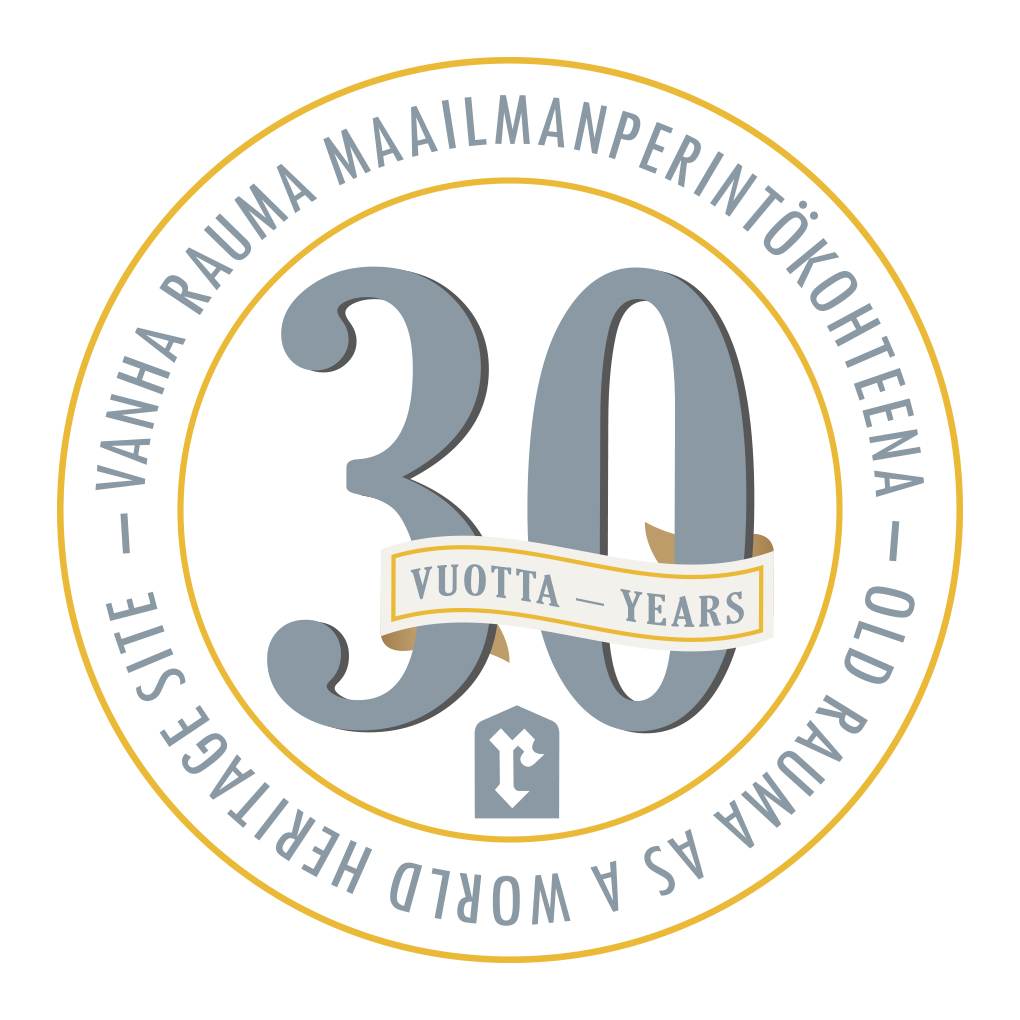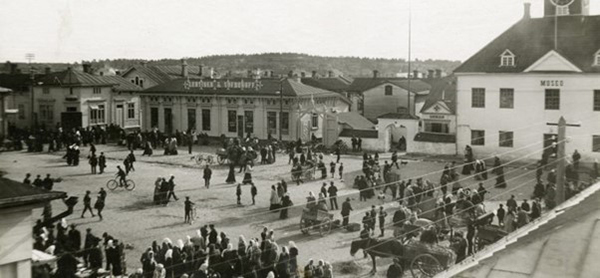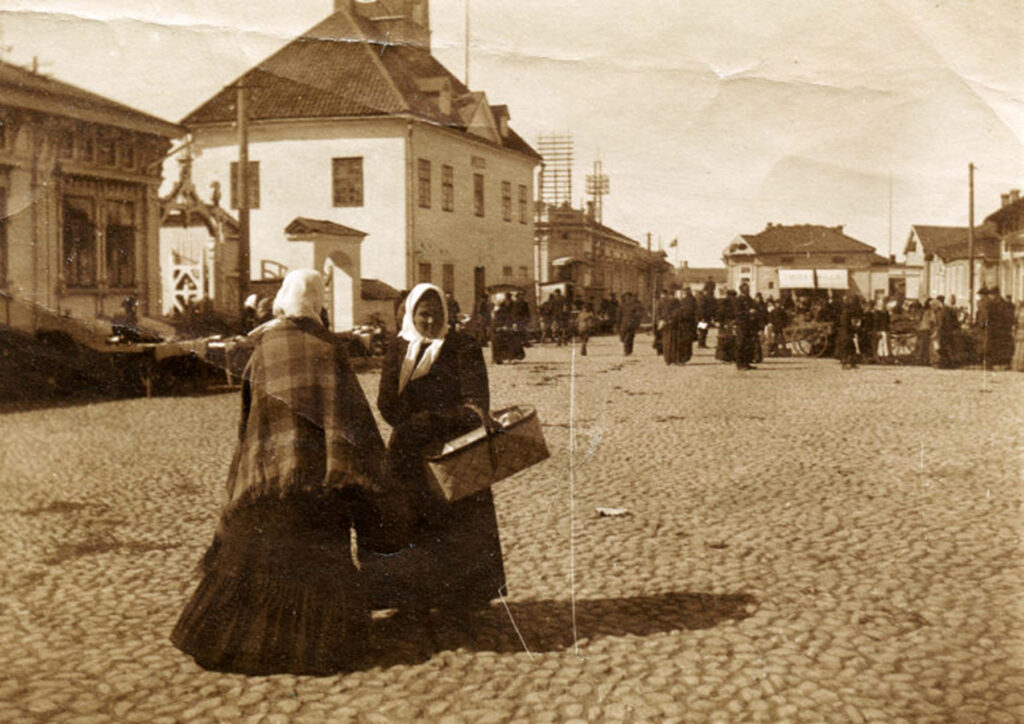MP30 – Market life in Rauma 4.6.2021
4.6.2021


Old Rauma, a UNESCO World Heritage Site, will celebrate its 30th anniversary in 2021. Old Rauma was inscribed on the World Heritage List in 1991 as a unique example of a living and well-preserved old Nordic tree city.
The third part of the 30 Years of Old Rauma as a World Heritage Site series describes market life in Rauma in the early 20th century.
Market life in Rauma
In the early decades of the 20th century, Kauppatori underwent an expansion, as the formerly narrow square became the marketplace it is today. The market days were initially Wednesday and Saturday, then Tuesday, Thursday and Saturday. In 1925, the restrictions on market days were lifted and the market was open every weekday.
Meat, fish, milk, eggs, cheese, bread, potatoes and other vegetables were sold on the market. Many people bought all the fresh food they needed at the market. In the early decades of the twentieth century, there were still very few of these in the shops. Butter was almost always bought at the market. It was customary to taste the butter first with a little finger or, more subtly, with a corner of butter paper. One Rauma resident recalls how, as a child, he avoided buying butter because he had to taste it.
Sausage sellers sold sausages such as bag sausage, tea sausage and pressed sausage, as well as hamburger sausage, which was like today’s sneaker sausage. Butchers did not have a stall, but an open table. Mostly pork was bought from them, but also minced meat, soup meat, and steamed beef, which was beef fat that had been passed through a meat grinder. In addition to fresh meat, the market also sold salty meat and, for example, pre-cooked cow udders for cold cuts.
At the market, bread was sold both by farmers’ wives and by the town’s home bakers. On market days, children could get a sugar-coated ace, a bun, a doughnut or an ear pie, or örfil, made from bun dough. In addition to baked goods, pancakes and raisin soup were also on sale.
There have also been markets at Rauma Market. The autumn market was held on 24 or 25 September. Market life was busier during the market period. Foodstuffs, milk, potatoes, apples and market boys, noodles and pretzels, saaves, pots, baskets, clothes and various trinkets were sold. The children were interested in the market balloons swinging on a rubber band, clay flower straws and balloons.
“If you had a markka, you didn’t know what you would have bought with it. You would have had to have everything, and neither of you would have wanted to give up the markka,” recalls one Rauma resident.
Author: Noora Jokinen

